Kiso-Fukushima to Nagakubo
Kiso-Fukushima to Mienokoshi
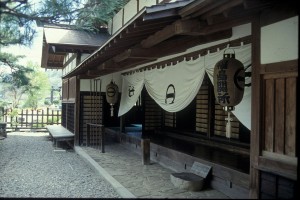
Situated in the center of the Kiso Valley, the city of Kiso-Fukushima is still the main town of Kiso. In the Muromachi era (1378 – 1573), Kiso-Fukushima was the castle town of the Kiso family, but this status was lost after the battle of Sekigahara when the whole valley was brought into the Owari domain, governed from Nagoya. Nevertheless, ... [Read more]
Mienokoshi to Torii-toge
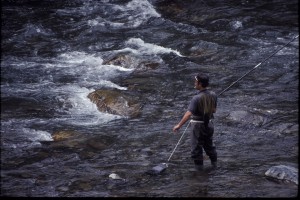
Mienokoshi was one of the later post-towns established on the Nakasendo, in 1605. Today, it contains little of the atmosphere of an old post-town. Most of the buildings are modern or non-descript, although the route as it leaves the town retains much of its former charm. After a half mile, the old highway disappears under the railway which cuts ... [Read more]
Torii-toge to Narai
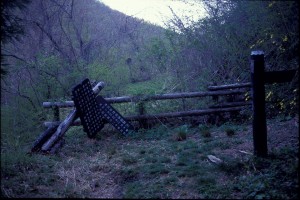
The Nakasendo is a mere path as it descends from Torii-toge to Narai. This is a somewhat wild area, precipitous and prone to landslides. There have been a series of major landslides in recent years which have destroyed the original path and forced a detour around it. The detour rejoins the Nakasendo after several hundred yards. A sign here ... [Read more]
Narai to Niegawa
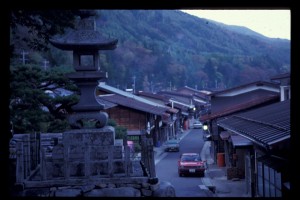
Narai has been carefully preserved, especially along the Nakasendo, although not to the extent that Tsumago has been. It seems more to have lain fallow until it was rediscovered by tourists in the 1970s, so in many ways it seems more ‘realistic’ or authentic than other popular ‘museum’ post-towns on the Nakasendo. At the entry of the town is ... [Read more]
Niegawa to Shiojiri
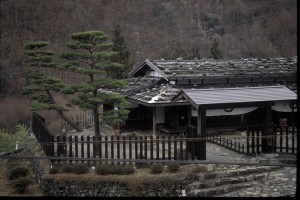
The sites of the old honjin and waki-honjin are in the center of Niegawa, but more notable is the reconstruction of the old barrier or seki at the Edo end of the town. This was rebuilt in 1976 using Edo period]documents and the town journal from 1876. Niegawa had a small population, only 545 people in 1841, but a proportionally large number of ... [Read more]
Shiojiri to Shiojiri-toge
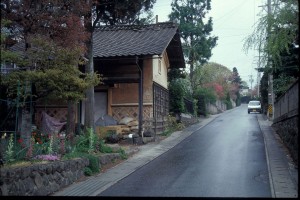
Shiojiri has long been an important place. In 1843, it had by far the most inns (75) of any post-town in Nagano prefecture. Today, the old village has grown into a small provincial city because it is now a railroad junction and a major marshaling yard for freight trains. The station, and the new city’s center, stand a little apart from the old ... [Read more]
Shiojiri-toge to Shimo-Suwa
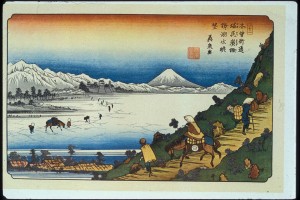
From the 3340 foot summit of Shiojiri-toge is a fine view through the trees surrounding Lake Suwa and, in the distance, Mount Fuji . The summit itself is occupied by a large memorial which commemorates the fact that the Emperor Meiji also stopped here to admire the view during his journey along the Nakasendo in 1881. So too did the poet Basho who ... [Read more]
Shimo-Suwa to Wada-toge
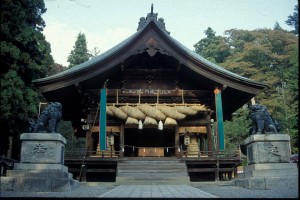
With a population of just over 52,000 today, the city of Suwa is the largest the old Nakasendo passes through in modern Naganoprefecture. Much of the appeal of Suwa derives from its many tourist attractions, including the twin shrines of ‘autumn’ and ‘spring’, the numerous hot springs in the area, and the amenities and scenic beauty of Lake ... [Read more]
Wada-toge to Nagakubo
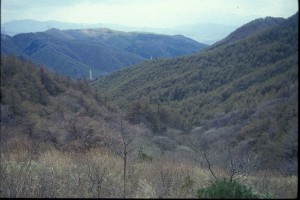
Wada-toge is the highest of the passes. The view from the top, in good weather, offers commanding views in both directions. To the west, the tortuous climb from Shimo-suwa and, beyond that, Shiojiri-toge are visible. The east, Mt. Asama dominates the broad plateau and beyond that, Usui-toge presents the final challenge before the descent to ... [Read more]
